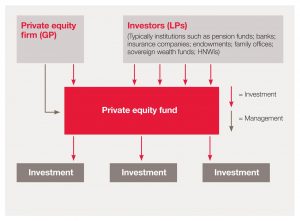Is the war on drugs a war worth fighting? As Gary Becker and Kevin Murphy wrote in a 2013 Wall Street Journal piece, “The direct monetary cost to American taxpayers of the war on drugs includes spending on police, the court personnel used to try drug users and traffickers, and the guards and other resources spent on imprisoning and punishing those convicted drug offenses.” At the time the article was written, those direct monetary costs amounted to over $40 billion a year. Additionally, that figure doesn’t take into account the indirect harmful effects of the war on drugs, such as increased dropout rates, more attractive profit margins for successful (and violent) drug operations in the U.S. and abroad, and the perpetuation of crime, all of which are more difficult to trace and quantify. On the other hand, at a time when overdose death rates are rising in all 50 states, it’s clear that doing nothing isn’t an option.

There are many who believe that the possession and use of drugs should remain a criminal offense because drugs are harmful and/or immoral, and that the law must act as a deterrent. I argue, however, that such laws are unjust if their benefits in reducing the amount of people with harmful drug addictions do not outweigh the immense monetary and social costs they impose. People on both sides of the debate call for the continued criminalization or legalization of drugs based on self-supporting moral premises, but these categorical arguments are of little use because they by definition place too much importance on the sanctity of the principles themselves. I would argue that virtues like liberty are desirable as means rather than ends, and that the ultimate end, or test, for determining whether a law is just should instead be whether the law will increase or decrease the aggregate level of happiness in society.
Considering a drug policy based on maximizing the utility (i.e., helping the maximum amount of people while imposing the least costs to their liberty to pursue property and happiness) of each taxpayer dollar spent, rather than one largely based on moral principles, will allow for both greater success in helping people avoid or escape drug addiction while at the same time freeing up public funds to be put to better use. Studies and comparable examples in places like Portugal have shown that treating drug use as a public health issue rather than a criminal issue makes greater economic sense and results in much better outcomes for addicts needing treatment.
Focusing on reducing demand for narcotics through programs that, for example, help abusers of prescription painkillers get over their addictions before they progress to using heroin would be both less costly to taxpayers and more helpful to individuals with drug problems. Additionally, instead of criminalizing recreational users of marijuana, which imposes significant costs on the justice system and turns otherwise normal people into criminals, redirecting marijuana demand toward legal sources of the drug would help erode the power of the drug cartels. As Tom Wainwright argues in a February 2016 Wall Street Journal article, “A dollar spent on drug education in U.S. schools cuts cocaine consumption by twice as much as spending that dollar on reducing supply in South America; spending it on treatment for addicts reduces it by 10 times as much.” If cutting spending on the war on drugs, legalizing recreational use of marijuana, and putting the funds saved toward public health initiatives to treat addicts will create net utility for society, Congress should take action and do so.
Sources:
http://wgno.com/2016/09/23/this-is-america-on-drugs-a-visual-guide/
http://www.wsj.com/articles/how-economists-would-wage-the-war-on-drugs-1455895053
http://www.wsj.com/articles/SB10001424127887324374004578217682305605070

